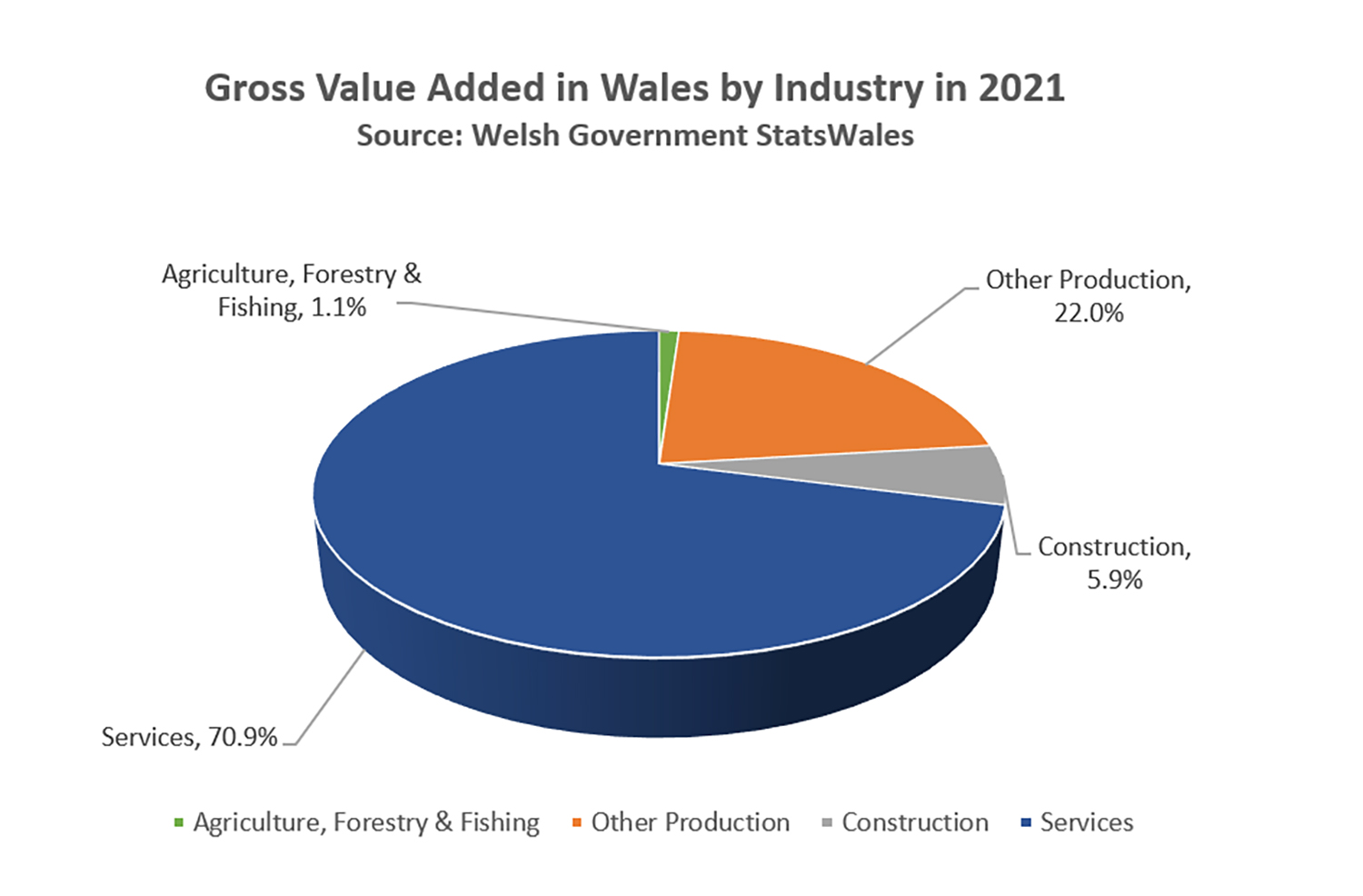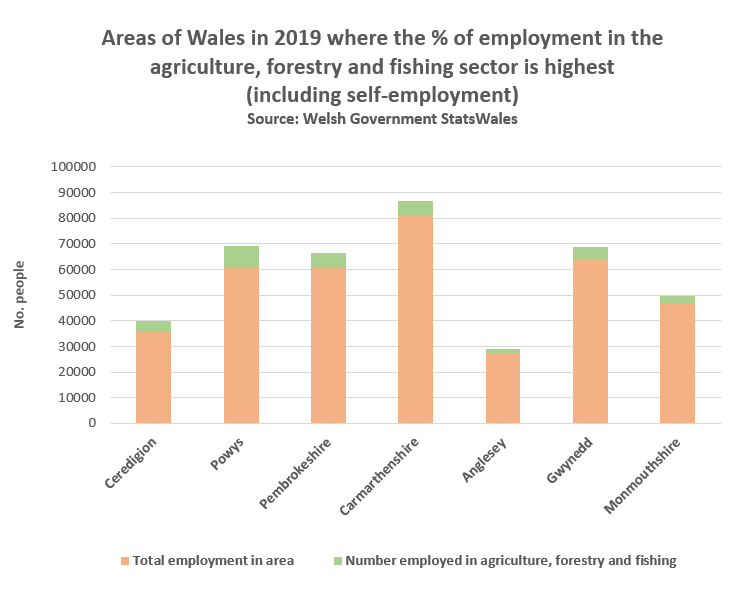Economics
In 2021, the agriculture, forestry and fishing sector accounted for for 1.1% of total gross value-added (GVA) to the Welsh economy.
This compares to, for example, tourism at 5% of Wales’s GVA, or manufacturing at 17.3%.
GVA is the measure of the value of goods and services produced while (unlike GDP), taking into account taxes and subsidies.
Data sources: Welsh Government StatsWales

In Wales, the total number of people employed in agriculture, forestry and fishing in 2019 was 44,600 or 3.1% of the total number of employed. This includes those that were self-employed.
The sector is the 7th largest for employment in Wales. However, numbers employed in agriculture declined by 13.6% between 2015 and 2021.
Data sources:
“The Farming Sector in Wales” Senedd Research Briefing, July 2022

Rural communities in Wales are often considered synonymous with “agricultural communities,” especially in the area of economic activity and employment. However, even in areas where the sector has the highest relative employment rates, the proportion of the workforce involved in agriculture is less than 15%.Â
The graph on the right shows the seven areas of rural Wales where agriculture has the highest proportions of employment (including self-employed people) in 2019.
The largest proportion of people employed in agriculture was in Powys (14.2%), followed by Ceredigion (12.7%), Pembrokeshire (9.9%), Carmarthenshire (7.5%), Isle of Anglesey (7.4%), Gwynedd (6.7%) and Monmouthsire (5.1%).
Data source:

